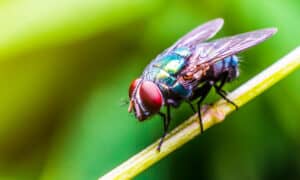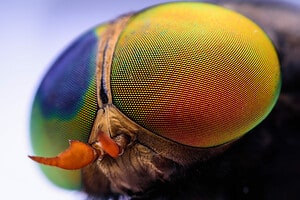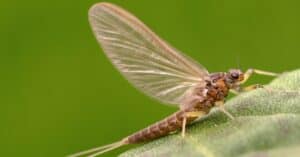Welcome to Florida’s annual love bug season! In this article, we delve into the intriguing world of these tiny insects and explore why they become so abundant during certain times of the year. Discover fascinating facts and insights about love bugs in our quest to unravel this mysterious phenomenon.
What is a Love Bug?

Love bugs (Plecia nearctica) are a species of march fly found in Florida.
©Chase D’animulls/iStock via Getty Images
A love bug is a nickname for a type of beetle commonly referred to as the ‘Plecia nearctica’ or ‘March Fly.’ These small insects are native to the southeastern United States and are most commonly found in Florida and other nearby states. Love bugs are known for their distinctive black-and-red coloring and for their incredibly dense swarms, which can be quite a nuisance for drivers. Though they don’t bite, sting, or cause any other harm, love bugs can be a nuisance due to their sheer numbers.
When is Love Bug Season in Florida?
In Florida, we have two and a half separate seasons of love bugs. The largest swarm generally emerges in mid-April and May, just before the rainy season. The second emergence happens at the end of summer, before the dry season in August. Finally, there is sometimes a third emergence of love bugs between December and January in South Florida, though this does not happen every year. In fact, the winter swarm is so small that many people miss it entirely.
Where Do They Come From?

During lovebug season, these insects have one goal. To mate!
©Bhupinder Bagga/iStock via Getty Images
Love bugs, also known as honeymoon flies, are a species of fly found primarily in the south and southeastern United States. They are named for their habit of flying around in swarms and often being seen in pairs. They are most active during the spring and summer months.
Love bugs are native to the tropics and are believed to have originated in Central America. They may have been accidentally introduced to the United States in the 1940s as a result of imports from their native range. Other people suggest that they naturally migrated along the coast through Mexico, which is certainly possible. Since then, they have spread throughout the entire state of Florida.
What Are They Doing Here?
Love bugs in Florida come out to mate during certain times of the year. Males are actively searching for females, and when they find them, they stay together for a few days before the male dies. The female then carries the male around until she lays her eggs and then eventually dies. During this time, males are swarming, and the larger ones tend to be more successful in finding a mate. Individuals that haven’t found their love yet fly alone.
What Attracts Them?
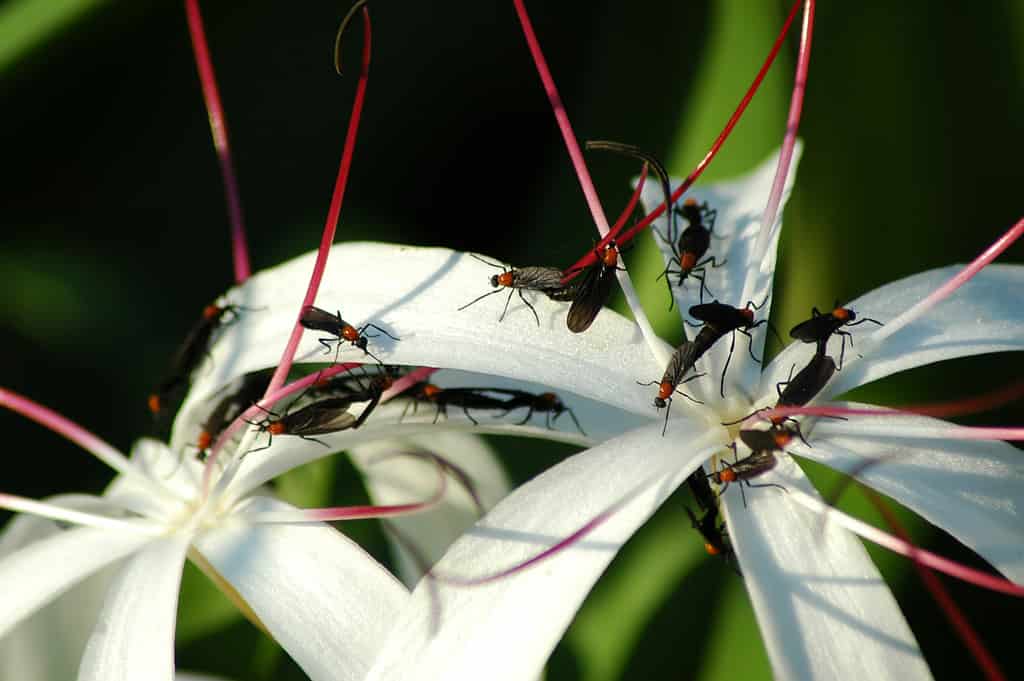
Love bugs are not all bad. They are pollinators and food for many types of birds and lizards.
©© Kathy Hicks/iStock via Getty Images
Love bugs are a nuisance to many people due to their tendency to swarm around vehicles and other outdoor areas. They are also attracted to car exhausts, making them difficult to remove. They do not bite or sting humans but are still considered a nuisance because of the damage they can cause to vehicles. When they are squished into the paint of a vehicle in large numbers, their body acids can damage the paint.
Heat appears to be attractive for love bugs, which is why they are most commonly seen along roads. They lay their eggs, and the larvae feed in landscapes, especially in the type of habitat that can be found close to roads. Once a female love bug emerges as an adult, it mates quickly before its short life of a few days comes to an end.
Their diet consists of plant juices and nectar. Love bugs are not considered a major agricultural pest due to their short lifespans and lack of damage to crops. However, their prolific swarming behavior can cause a nuisance to homeowners and drivers, especially during their peak activity periods.
Love Bug Season — Hazards and Preventions
When love bugs swarm vehicles in large numbers, they can obstruct the driver’s view and make it difficult to see. To stay safe while driving during their mating season, be aware and drive cautiously, or pull over if you are surrounded by love bugs. Love bugs are most active during the day, so to avoid them, you can run errands in the early evening.
Lovebugs can cause harm to your car’s motor. If you are driving, they can get into the radiator and block essential components. In serious cases, the bugs can cover the car’s grille and affect airflow to the engine, causing it to overheat. Not good!
Lovebugs can be a hazard to your vehicle since their bodies can become acidic after spending hours in the sun. This can damage the paint of your car. To prevent this, make sure to clean off the lovebugs from the car’s surface within 24 hours.
During the warmer months in Florida, love bugs can be a nuisance. High levels of moisture give these insects the opportunity to inhabit areas such as basements, attics, and storage rooms. If you reside in a location where lovebugs are prevalent, they could infiltrate your home. Keep doors and windows closed, and make sure your screens are secure.
The female lovebugs can be a nuisance to your plants as they look for moist and nutrient-rich conditions to lay their eggs. Be aware that flower beds could be a potential breeding ground, and keep an eye out for them. Keep debris out of your yard and remove standing water.
What Makes Some Love Bug Seasons Worse Than Others?
Why are some love bug seasons worse than others? The answer lies in the environment. Every year, the weather conditions vary, and this can have a direct impact on the number of love bugs. Warmer, wetter weather conditions help love bugs thrive, while cooler and drier conditions can limit their population. If the weather is too rainy, love bugs will be flooded out. They need a perfect balance of dry and wet in order to thrive.
In addition to weather conditions, the availability of food and water also plays an important role. Love bugs feed on nectar from flowers, as well as decomposing plant material. They need access to both in order to survive. If food and water are scarce, love bug populations can suffer.
The size of the love bug population can also be affected by other factors, such as the presence of predators, the availability of breeding grounds, and the amount of competition for resources. All of these can have an impact on how many love bugs survive and reproduce in a given year.
How Do You Clean Love Bugs Off Your Car?
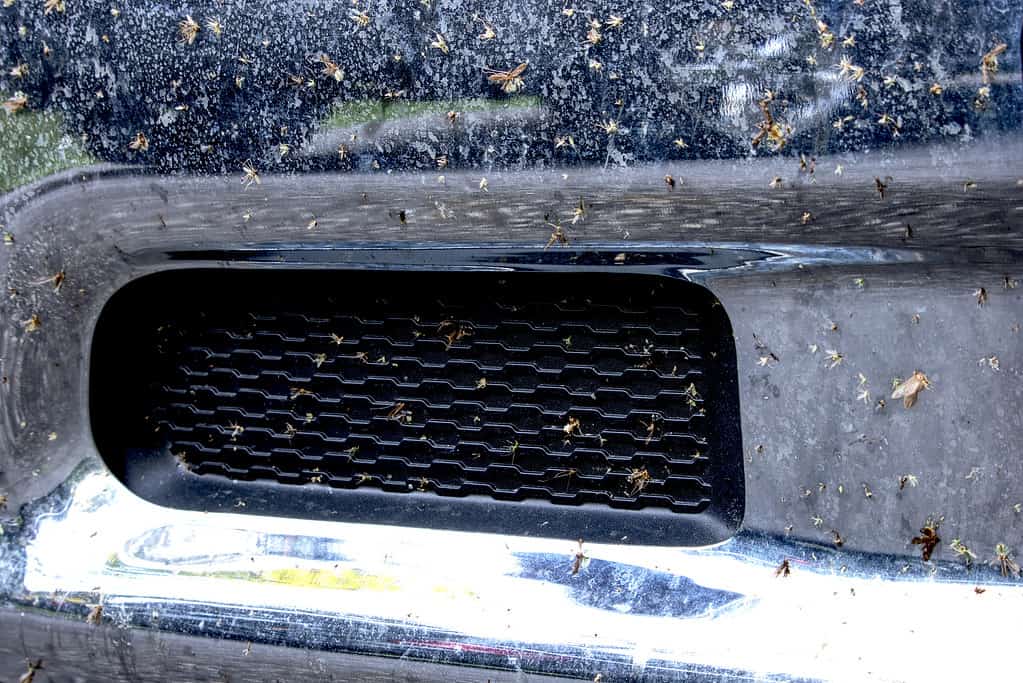
If your grille is clogged during lovebug season, be sure to remove the insects for proper airflow to the engine.
©Adam Simpson/iStock via Getty Images
Living in or traveling through Florida often means your car will be covered with lovebugs. They are attracted to highways as the hot temperature and abundance of decaying materials are ideal for them.
In today’s world, protecting cars is much easier than it used to be, though love bugs can still be an annoying nuisance. The best way to prevent long days of scraped bug guts and worrying about resale value is to make sure your car has a good wax job. Spend the effort and time to ensure a thick coating, and you’ll be able to avoid a lot of frustration.
How Are Love Bugs Beneficial?

Armadillos like love bug season in Florida. They think the larvae taste delicious.
©mariamalaya/Shutterstock.com
Despite their reputation as a nuisance, love bugs are actually beneficial to the environment. These tiny insects are a great source of food for a wide variety of animals, including spiders, birds, and lizards. Birds like quail and robins eat lovebug larvae. Armadillos, earwigs, and centipedes also snack on lovebug larvae. Love bugs are a key part of the food chain and provide a vital source of nutrition for these species. They also act as pollinators for flowers and other plants, helping them to reproduce and spread.
In addition, love bugs help to break down organic matter in the environment. By consuming decaying plant and animal matter, they help to recycle essential nutrients back into the soil, providing a natural fertilizer.
Overall, love bugs are an important part of our ecosystem and have many beneficial effects. They provide food for animals, help plants to reproduce, and even help to clean up the environment. It’s clear that these small creatures are more than just a nuisance – they play an important role in the world around us.
Celebrating Love Bugs
Some folks like to celebrate the love they ascribe to these insects with celebrations in their honor. One such festivity that occurs annually around the time that love bugs are the most prominent is the Love Affair Arts Festival held in Tifton, Georgia. It takes place the last weekend of April or the first weekend of May. While the festival is focused on fine art, live music, and acting troupes, it received its name from the dense population of love bugs that come out to party that time of year.
The photo featured at the top of this post is © Chase D'animulls/iStock via Getty Images
Thank you for reading! Have some feedback for us? Contact the AZ Animals editorial team.



